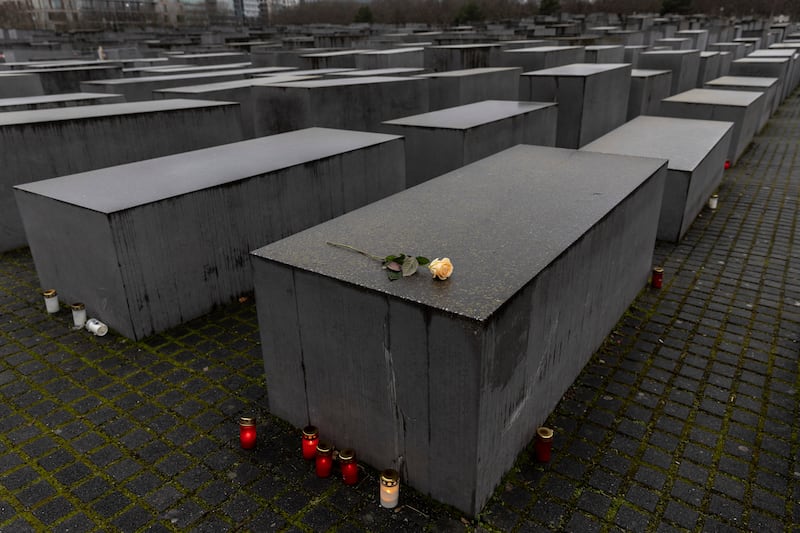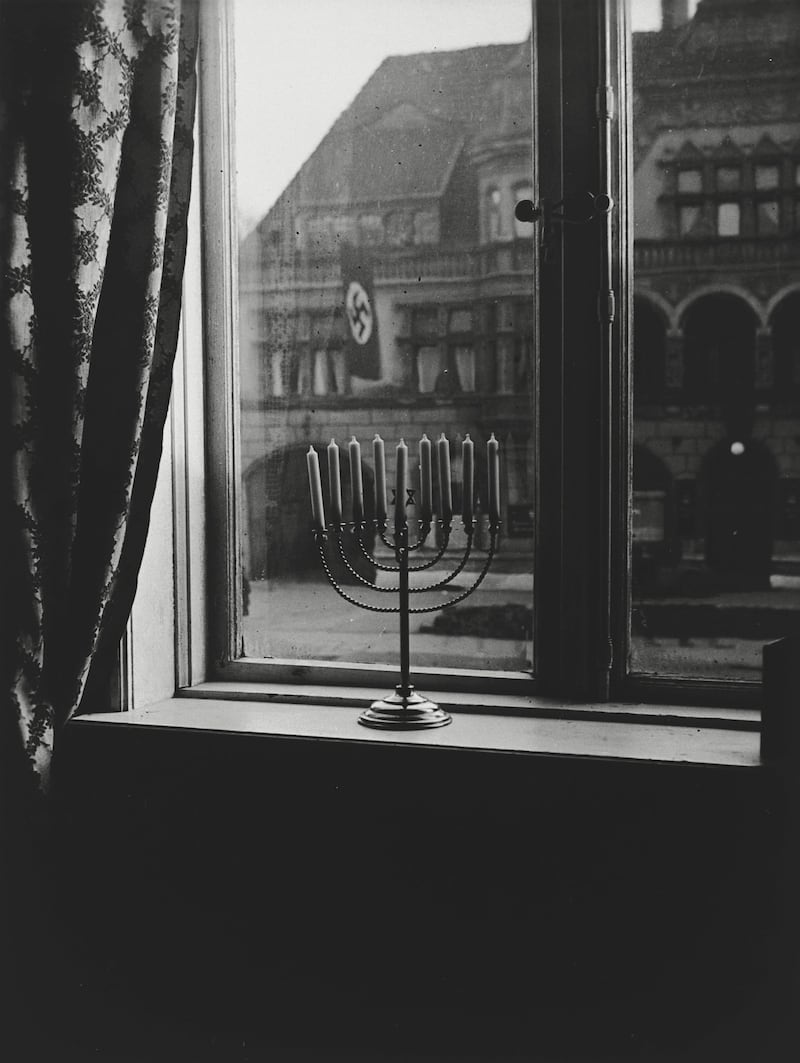In a dark Berlin synagogue, a mournful clarinet revives the lost music of a forgotten Jewish composer. In an echoing Bundestag hallway, a collection of 16 objects – including a blonde doll named Inge – recalls lives lost and lives saved.
And in the bright parliamentary chamber, a gay man stands, tall and proud, after relating how his persecution under Nazi-era laws began – in 1964.
When, on Friday, Germany marked its greatest disgrace, the murder of six million European Jews eight decades ago, it tried to do something new – and risky.
As the last Jewish survivors pass on, and familiar remembrance rituals risk tipping into empty gestures, a new generation of historians, musicians and activists in Germany are breathing fresh life and fresh hope into the central vow of Holocaust, or Shoah, remembrance: never forget.
[ Herzog recalls Irish-born father’s role in liberating Nazi death campsOpens in new window ]
Friday’s solemn ceremony in the German parliament expanded the focus to neglected victims of Nazi terror, an experiment with an uncertain outcome: how to be inclusive and mindful of all victim groups and their suffering without losing sight of the singular horror suffered by Europe’s Jews?
It fell to Dutch speaker Rozette Kats to extend the hand of solidarity, offering a way forward.
In February 1943, when she was aged just nine months, her pregnant mother placed her in the care of a friendly couple in Amsterdam. Renamed Rita, she was six when she learned her true identity – and that her parents and newborn baby brother had been murdered in Auschwitz.

She told the Bundestag audience that she was so terrified and confused by her family’s fate – and what it meant for her – that she was 50 before she had her “coming out” as a Jewish woman with a Shoah shadow.
“I lived a double life and this double life made me sick,” she said.
Three decades of memorial work, she said, had made her aware of the selective nature of European remembrance.
Excluding Sinti and Roma and those persecuted because of their political and religious beliefs or sexual identity was “wrong”, she said: “If people are divided into categories of more or less valued, it means that the Nazi ideology lives on and remains effective.”
Some 50,000 men were convicted in the 12-year Nazi era under a revised criminal code – paragraph 175 – that made illegal not just sex between men but any “lewd act”. Around 10,000 convicted men ended up in Nazi camps wearing the pink triangle, the lowest rung of the prisoner hierarchy, and many were murdered.
The Nazi law remained, unchanged, on East Germany’s statute books until 1957, and West Germany’s for a further 12 years.
That change came too late for Klaus Schirdewahn. As a 17-year-old he was convicted in 1964 under the Nazi era paragraph 175 and avoided prison only by submitting to therapy to “heal” him of his homosexuality.
On Friday Schirdewahn told the Bundestag how his life was marked by deep shame and a criminal record struck out only through a 2017 rehabilitation law.
To a visibly moved audience – including President Frank Walter Steinmeier, chancellor Olaf Scholz and leading judges and ministers – Schirdewahn said Friday’s ceremony “makes visible the injustice that did not end in 1945 and, for those affected, gives them back some of their dignity”.
This annual Bundestag ceremony on January 27th, when the Auschwitz death camp was liberated in 1945, has been part of Germany’s political calendar since 1996. But not everyone is a fan. Some German Jewish critics dismiss it as wreath-speech “memorial theatre”, a virtue-signalling demand for a forgiveness that can never come.

Meanwhile the far-right Alternative für Deutschland (AfD) has declared war on Germany’s “guilt cult”, hoping to tap into the 38 per cent of Germans who, according a 2020 poll, would like to draw a line under the Nazi period and feelings of collective guilt.
For Felix Klein, federal commissioner for anti-Semitism, such polls are a worrying reminder that many Germans misunderstand postwar efforts to take ownership for the past as a perpetual guilt trip.
“We are experiencing a victim-perpetrator reversal,” he said. “With our remembrance culture we have achieved quite a bit, but personal remembrance – people looking at their own family history – is still in its infancy.”
In advance of another anniversary on Monday – the 90th anniversary of Adolf Hitler’s rise to power – pandemic radicalisation has repurposed anti-Jewish conspiracies. For many Jews in Germany, it seems things are getting worse, not better.
Each day German police log five anti-Semitic attacks a day on people and Jewish buildings, guarded day and night.
Places such as Berlin’s Pestalozzistrasse synagogue, where a crowd has queued in the cold and squeezed through airport-style security for the Melodies of Life concert.
For founder Nur Ben Shalom, an Israeli-born musician living in Berlin, the concert began as a way to remember his murdered grand aunt Salomea Ochs, deported to her death in 1943. What began as a gathering with musician friends has grown into an annual series of concerts and educational programme, rediscovering lost lives and playing their music – not heard since 1945.
“Above all it is a very human project,” said Shalom, “connecting elements of private and human Jewish identity but also the collective Jewish identity in interaction with the culture of their environment.”
Remembering the Shoah victims as people who lived – not Jews who died – is the focus, too, of 16 Objects. This jewel box of an exhibition, just opened in a Bundestag hall, returns to Germany for the first time religious and everyday objects entrusted to Israel’s Yad Vashem by survivor families.
Visitors can inspect a miniature doll’s kitchen, a diary, a stethoscope, and learn about their former owners. British born co-curator Ruth Ur says her objects-led approach sparked relief and enthusiasm among German partners.
“Everyone knew the old ways weren’t working – wreath-laying moves no one – but there was real anxiety about doing this wrong,” she said. “Many people can’t bear to go near this subject, the crust has become so hard around their hearts and minds, but with these familiar objects we hope to awaken their curiosity.”
[ An Irish poet confronts the Holocaust during the second World WarOpens in new window ]
For Lore Mayerfeld, who fled Nazi Germany as a four-year-old, this week marked a reunion in Berlin with one of the exhibitions: her blond doll, Inge.
Mayerfeld says the exhibition’s fresh approach was urgently needed in a world that “hasn’t learned anything from this past war”.
“There are so many people who say it never even happened,” she said. “They can’t tell me that. I was there. I lived it.”












